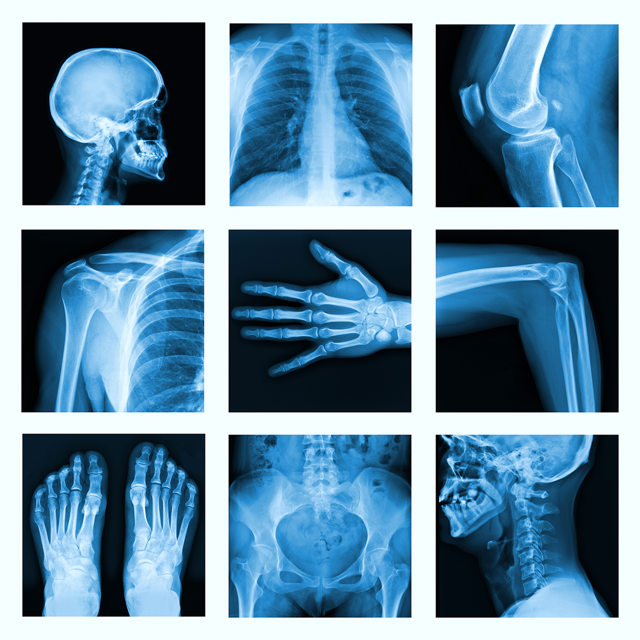
Interventional Radiology in Pennsylvania
Interventional radiology in Pennsylvania is one of the fastest evolving specialties and it is changing the way many diseases, health conditions, and injuries are diagnosed and treated. In many cases, this minimally invasive field is replacing traditional surgery, making recovery from a health condition faster and easier. Penn Highlands interventional radiologists in Pennsylvania are on the cutting edge of this fast-moving specialty. Learn how we can help below.
Interventional Radiology Transforming Healthcare
Interventional radiology (IR) in Pennsylvania makes diagnosing and treating a range of conditions quick and convenient. Interventional radiologists use radiological imaging such as MRI, CT, X-ray fluoroscopy, or ultrasound to guide tiny equipment through the patient’s body via arteries. Using this approach, which requires just a small incision, interventional radiologists can look inside the body to diagnose conditions and then treat them—in many cases, replacing the need for surgery.
What Conditions does Interventional Radiology In Pennsylvania treat?
Interventional radiologists diagnose and treat many of today’s toughest medical problems, including cardiovascular and venous disease, kidney disease, stroke, certain cancers, and more. Interventional radiology is often used in trauma care to stop bleeding and quickly dissolve blood clots or eliminate blockages that are causing strokes. Interventional radiology is being used for these conditions:
Vascular diseases, including:
- Aneurysm—a bulge or "ballooning" in the wall of an artery. One common type of aneurysm is abdominal aortic aneurysm (AAA)
- Atherosclerosis—a disease in which plaque (made up of fat, cholesterol, calcium, and other substances found in the blood) builds up inside your arteries. This build-up can lead to multiple health conditions, including peripheral arterial disease.
- Blood clots, including deep vein thrombosis and pulmonary embolism
- Stroke—a serious condition that happens when blood flow to your brain stops
- Varicose veins—swollen, twisted veins that you can see just under the skin
Cancer: The most common cancers treated with interventional radiology include lung, liver, kidney and bone cancers.
Men’s Health: Interventional radiology treatment may be used to help treat enlarged prostate (benign prostatic hyperplasia) and varicoceles (enlarged veins in the scrotum that can lead to infertility).
Women’s Health: Interventional radiology is used to treat a number of women’s health issues, including uterine fibroids, chronic pelvic pain, and blocked fallopian tubes that can cause infertility.

Interventional Radiology
Penn Highlands Brookville
Penn Highlands Clearfield
Penn Highlands DuBois
Penn Highlands Elk
Penn Highlands Tyrone



Advanced Medicine.
Here.
Interventional Radiology is part of a growing healthcare system that provides exceptional care here, close to home.
Penn Highlands Leads the Way in Interventional Radiology in Pennsylvania
Penn Highlands DuBois and Penn Highlands Mon Valley offer international radiology services in Pennsylvania. The suites feature new monoplane devices, the Philips Azurion 7 C20 with FlexArm. The innovative device allows for virtually unlimited flexibility to perform imaging, from head to toe on the left and right side for both 2D and 3D visualizations. This means patients do not need to be moved as often as they would with traditional imaging, reducing time needed to position the device and the table and providing more comfort for the patient. The device also allows for multiple specialists to work in one room, creating a truly collaborative, efficient environment. In addition, the new technology will allow for additional interventions and procedures to be.
A second room in the suite will open in early 2024 and feature a new biplane system—the ARTIS icono—that offers top quality images and fast procedures. Considered a major advancement in interventional radiology, a biplane system takes multiple images. The ARTIS icono can switch seamlessly from 2D to 3D imaging and offers more precise imaging even for more difficult areas to visualize like the skull base. While the device will be particularly beneficial for patients with acute ischemic stroke who are thrombectomy eligible, the innovation will also advance precision and outcomes for patients needing:
- Neurointerventions
- Interventional Radiology/Oncology
- Interventional Cardiology
- Cardiovascular Surgery
The ARTIS icono has been shown to improve outcomes in patients with stroke, arteriovenous malformations, spinal interventions, and cerebral aneurysms. In addition to providing better quality images, greater precision, and faster procedure times, the ARTIS icono reduces radiation by up to 60% as compared to X-ray tube technology.
What are the most common interventional radiology procedures?
Interventional radiology is used commonly to help doctors make a diagnosis. By using image guidance and a tiny camera, interventional radiologists can travel through arteries to reach an area to see directly what is happening. Interventional radiology is also being increasingly used to treat various conditions, often replacing more invasive procedures.
Penn Highlands fellowship-trained interventional radiologists perform most available procedures, including:
- Angiography
- Angioplasty
- Arterial angioplasty/stenting
- Arterial embolization
- Biliary access
- Biopsies
- Bone marrow biopsies
- Central venous access
- Cholecystostomy tube placement
- DVT/PE thrombectomy
- DVT/PE thrombolysis
- Embolization
- Gastrojejunostomy tube placement
- Gastronomy tubes
- Hepatic chemoembolization
- Image-guided biopsies
- Injection of blood-dissolving medications like tPA
- Insertion of catheters to for chemotherapy, hemodialysis, or nutrition
- Insertion of gastrostomy tubes
- Insertion of IVC filters
- Intravascular ultrasound
- IV access
- IVC filter placement/retrieval
- Joint aspirations
- Lung, liver, renal and other tumor ablations
- Neurolysis
- Non-tunneled dialysis catheter placement
- Pain injections
- Percutaneous abscess drainage
- Percutaneous biliary drain placement
- Percutaneous nephrostomy catheter placement
- Renal access
- Stent placement
- Transjugular intrahepatic portosystemic shunt (TIPS)
- Tunneled dialysis catheter placement
- Uterine fibroid embolization
- Venous Ablation
- Vertebroplasty
FAQs
Interventional radiology procedures have been around for years but have more recently become best practice and standard of care. Most interventional radiology procedures are minimally invasive, minimize risk to patients (as compared to open surgery), and result in shorter recovery times for patients. Interventional radiology has also been found to provide better outcomes for patients. When compared to open surgery, interventional radiology is faster and more precise.
Interventional radiologists do not perform traditional surgery. Instead they perform minimally invasive procedures using image guidance that can replace surgery in certain cases. In most cases, interventional radiologists only make small incisions to insert catheters or other tools to deliver medication or nutrition to a specific target area.
Is interventional radiology like surgery?
Interventional radiology procedures are minimally invasive procedures. Unlike open surgery procedures, most interventional radiology in Pennsylvania is performed with the patient awake using local anesthesia, analgesia, or combination therapy. This reduces the risks associated with general anesthesia, which is the standard for open surgical procedures. Interventional radiology procedures typically only require small incisions, which result in less pain and faster recovery times.
How long does an IR procedure take?
The length of interventional radiology procedures varies depending on the type of procedure, the interventional radiologist what they do, and the condition being treated. Some IR procedures take 20 minutes or less while others can take 1-2 hours.
How do you get an interventional radiologist referral?
Patients who could benefit from interventional radiology procedures typically receive an interventional radiologist referral by their primary care physician, a hospitalist, surgeon, nephrologist, or neurologist.
Imaging Services at the Penn Highlands DuBois offer Interventional radiology services.
Hours:
Monday - Friday
5:30 AM - 4:30 PM
Imaging Services at Penn Highlands Mon Valley offers Interventional Radiology services.
Hours:
Monday - Friday
7:00 AM - 5:00 PM



